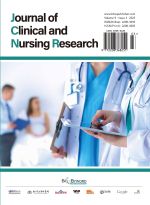Abstract
This study aimed to compare the complications of preterm twins versus singletons and analyze differences across gestational ages. Preterm twins delivered between 2 March 2022 and 6 November 2022 were compared to an age-matched control group of singletons, involving 65 twins and 103 singletons. The most common complication in premature infants was neonatal jaundice (87.72%), followed by patent foramen ovale (79.76%) and neonatal respiratory distress syndrome (NRDS) (57.14%). Twins had significantly higher Apgar scores at 1, 5, and 10 minutes compared to singletons. However, twins showed a higher incidence of ventricular septal defect (VSD) (7.69%) than singletons, with a statistically significant difference. In contrast, twins exhibited significantly lower rates of neonatal jaundice (78.46%), electrolyte imbalance (18.4%), and acid-base imbalance (9.23%) compared to singletons. Furthermore, as gestational age increased, the incidence of intrauterine infection, electrolyte and acid-base imbalances, neonatal coagulation disorders, patent ductus arteriosus (PDA), anemia, and NRDS in preterm infants gradually decreased, with all differences reaching statistical significance (P < 0.05). These findings highlight the importance of close monitoring and timely management of complications in premature infants to prevent severe outcomes.
References
Xu S, Zhao X, 2011, Analysis of Complications and High-Risk Factors During Pregnancy and Childbirth in Twin (Multiple) Preterm Infants. Journal of Medical Forum, 32(3): 152–15
Gao C, Sun X, Lu L, et al., 2019, Prevalence of Gestational Diabetes Mellitus in Mainland China: A Systematic Review and Meta-Analysis. Journal of Diabetes Investigation, 10(1): 154–162. https://doi.org/10.1111/jdi.12854
Zeng X, He Z, Zhou N, et al., 2023, The Prevalence and Risk Factors of Gestational Diabetes Mellitus Among 23,869 Pregnant Women in Chongqing. Chin J Dis Control Prev, 27(1): 70–76.
Zhao D, Shan L, Mi Y, et al., 2021, Effects of Gestational Diabetes Mellitus and Mid Pregnancy Blood Glucose Levels on Gestational Weeks Based on Birth Cohort Study. Journal of Xi’an Jiaotong University (Medical Sciences), 42(4): 623–627.
Zhang XR, Zeng CM, Liu J, 2016, Perinatal Complications of Late-Preterm Twins and Early-Term Twins. Chin J Clinicians (Electronic Edition), 10(4): 511–516.
Huo Z, Li H, Du W, 2016, Impact of Pre-Pregnancy BMI and Parity on the Incidence of Gestational Diabetes Mellitus Combined with Hypothyroidism. China Medical Herald, 13(6): 111–114.
Yan Hong, Zhou Yulu, Wang Jian, et al., 2023, Relationship of the Parameters Related to Reticulocyte with Anemia, Gestational Age, and Day Age in Preterm Infants 7 Days After Birth. Journal of Guizhou Medical University, 48(11): 1399–1405.
National Health Commission of the People’s Republic of China. Report on Chinese Residents’ Chronic Diseases and Nutrition. Acta Nutrimenta Sinica, 42(6): 521.
Wang X, Hu X, Tian W, et al, 2015, Clinical Analysis of 188 Cases of Late Preterm Twin Infants. Maternal and Child Health Care of China, 30: 1053–1055.
Li S, Gong J, Mo J, et al., 2018, Comparison of the High-Risk Factors of Single and Twin Premature Birth with the Outcome of Premature Infants. Chinese Journal of Practical Gynecology and Obstetrics, 34(2): 171–175.
Yu Y, Wang H, Cui W, et al., 2022, Analysis of Risk Factors and Establishment of Prediction Model for Pathological Jaundice in Newborns. Maternal and Child Health Care of China, 37(2): 308–310.
Pang M, Zhang X, Zhang X, 2024, Clinical Features of 523 Hospitalized Preterm Infants. Inner Mongolia Med J, 56(3): 281–286.
Ren R, Luo S, Zhong X, 2022, Investigation on Neonatal Disease Spectrum of 336 Premature Infants. Journal of Gannan Medical University, 42(11): 1183–1186.
Jiao X, Wang X, Chu Q, 2012, Retrospective Analysis of Clinical Data of 477 Premature Infants. Shandong Medical Journal, 52(1): 95–96.
Dan X, Jia C, 2023, Risk Factors of Neonatal Respiratory Distress Syndrome in Preterm Infants with Gestational Age Less Than 34 Weeks. Medical Recapitulate, 29(20): 4399–4403.
Murphy CA, Neary E, O’Reilly M, et al., 2022, The Role of the Calibrated Automated Thrombogram in Neonates: Describing Mechanisms of Neonatal Haemostasis and Evaluating Haemostatic Drugs. European Journal of Pediatrics, 181(1): 23–33. https://doi.org/10.1007/s00431-021-04196-8
Bo W, Zhen Z, Dexin L, 2024, Analysis of the Risk Factors of Critical Value of Abnormal Coagulation Function in Early Neonates and Its Correlation with Critical Illness. J Dev Med, 12(1): 41–46.
Penny DJ, Vick GW 3rd, 2011, Ventricular Septal Defect. Lancet, 377(9771): 1103–1112. https://doi.org/10.1016/S0140-6736(10)61339-6
Xing L, 2016, Peptidomic Analysis of Amniotic Fluid in Fetuses with Simple Ventricular Septal Defect and Study on Factors Affecting Natural Closure, thesis, Nanjing Medical University.
Benitz W E, 2010, Treatment of Persistent Patent Ductus Arteriosus in Preterm Infants: Time to Accept the Null Hypothesis?. Journal of Perinatology, 30(4): 241–252. https://doi.org/10.1038/jp.2010.3
Conrad C, Newberry D, 2019, Understanding the Pathophysiology, Implications, and Treatment Options of Patent Ductus Arteriosus in the Neonatal Population. Advances in Neonatal Care, 19(3): 179–187. https://doi.org/10.1097/ANC.0000000000000590
Sankar MN, Bhombal S, Benitz WE, 2019, PDA: To Treat or Not to Treat. Congenital Heart Disease, 14(1): 46–51.https://doi.org/10.1111/chd.12708
Van Overmeire B, Chemtob S, 2005, The Pharmacologic Closure of the Patent Ductus Arteriosus. Seminars in Fetal & Neonatal Medicine, 10(2): 177–184. https://doi.org/10.1016/j.siny.2004.10.003
Widness JA, 2008, Pathophysiology of Anemia During the Neonatal Period, Including Anemia of Prematurity. NeoReviews, 9(11): e520. https://doi.org/10.1542/neo.9-11-e520
Kim C J, Romero R, Chaemsaithong P, et al, 2015, Acute Chorioamnionitis and Funisitis: Definition, Pathologic Features, and Clinical Significance. American Journal of Obstetrics and Gynecology, 213(4 Suppl): S29–S52. https://doi.org/10.1016/j.ajog.2015.08.040
Gan Y, Chen Q, 2023, Distribution and Drug Resistance of Microbiota in Premature Infants with Intrauterine Infection. Journal of North Pharmacy, 20(01): 138–140.
Kang JJ, Kim J, Park S, et al., 2019, Feasibility of Ultrasound-Guided Trigger Point Injection in Patients with Myofascial Pain Syndrome. Healthcare, 7(4): 118. https://doi.org/10.3390/healthcare7040118
Mollo B, Hobson C A, Le Hello S, et al., 2021, Intrauterine Infection Caused by Nontyphoidal Salmonella: A Literature Review. The Journal of Maternal-Fetal & Neonatal Medicine, 34(23): 4000–4004. https://doi.org/10.1080/14767058.2019.1702950
